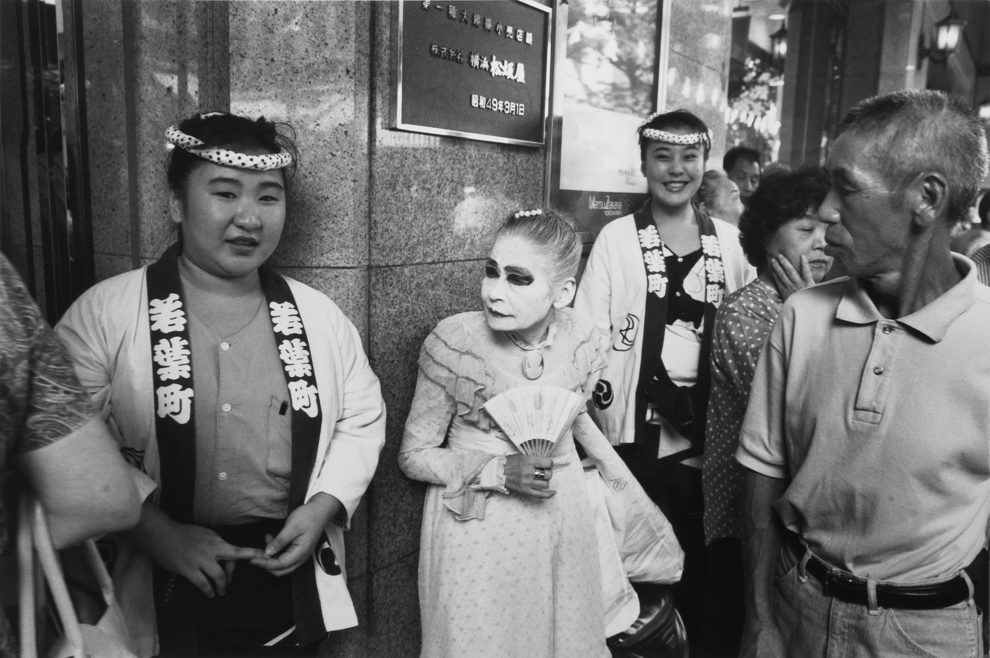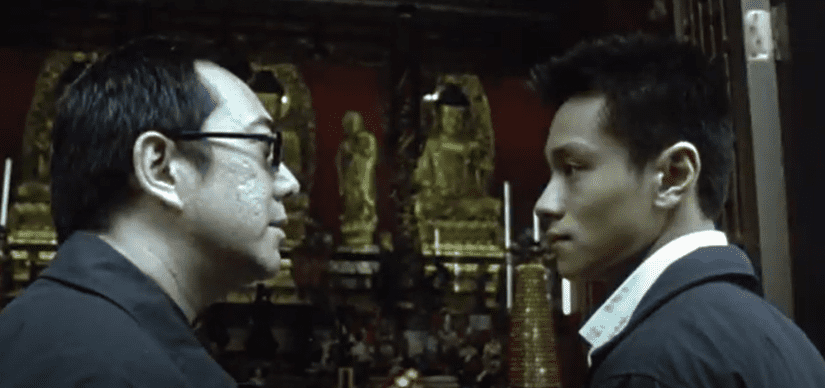Hachiko is not the only icon of Japan. In the city of Yokohama, the whole term of ‘icon” takes a completely different meaning, since the title is bestowed to an (in)famous former prostitute, who had been part of the local setting for more than 50 years, from just after World War II, when she catered to the “needs” of American GIs, to 1995, where she mysteriously disappeared after roaming the local streets for years. Takahiro Nakamura, in his debut, which he began shooting when he was 22 years old, creates a rather thorough portrait of the urban legend that was Yokohama Mary, and through her, of the city itself through the years.
Yokohama Mary is screening at Inland Dimensions

Nakamura has included the interviews of a number of people who got to know her, but the most central one in the documentary is gay cabaret singer Ganjiro Nagato, who met her personally only in 1991, but whose narration includes an episode that highlights her significance in the most eloquent fashion. That year, Nagato stumbled upon her looking at a poster advertising his upcoming performance outside the theater he was appearing in. Knowing who she was, she offered her a ticket, and she actually attended his show. At the conclusion of his set, Mary approached the stage and gave him a present, with the whole theater clapping all the while, acknowledging her presence as the two shook hands. “Few people probably knew who I was, but everyone clapped because Mary was famous,” Nagato says in the documentary, in a scene that is fully captured in the movie.
The mystery that surrounds her origins was never actually lifted, but Nakamura makes his best of finding out who she was, by presenting a letter to her parents, but mostly, by talking to as many people who knew her as possible. A woman who used to sell cosmetics tells the story of how Mary came to wear this intense make up all over her body, a former geisha talks about her ways being a bit snob, a former lover talks about how he spent one night with her just because she wanted to sleep with a Japanese for a change.

Hideo Mori, who met Yokohama Mary in the 60s, asked for her permission to take pictures of her when he met in the GM Building in 1993, where she operated the elevator for visitors and asked for tips. She agreed, and he followed her for a year, documenting her routines, eventually publishing a photobook with his collection, which is the best document of how she spent her last days.
A hairdresser and a woman who run a laundry shop also share their thoughts about her and the ways they helped her, while a butoh dancer who has come up with a stage play about her shares his fascination about her persona, up to the way she moved and looked at herself in the mirror.
At the same time, through Mary's story, the tale of Yokohama after the war also unfolds, with the way the American GIs shaped the setting and particularly nightlife, where Negishi-ya, a 24/7 hangout store that appeared in Kurosawa's “High and Low”, taking center stage.
The sense of nostalgia is permeating the film, but at the same time, the bitterness about her last years is also evident, as the generations that did not experience war, were not so willing to help her, as she gradually lost her place in the city.
These two elements form the basis of the documentary aesthetics, with Nakamura presenting the whole story in excellent fashion, particularly in the way he connects the many different elements of the film: interviews, photographs, video footage and the accompanying narration and jazzy score. Kazuhiro Shirao has done a great job in the editing of the movie, with the sole fault in the presentation being the somewhat overly extensive focus on Ganjiro Nagato, to the point that, at times, the movie appears as a promotional piece.
Despite this minor issue, “Yokohama Mary” is an excellent documentary about a truly iconic figure, who definitely deserved more than she got in the end.















